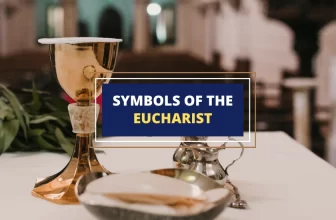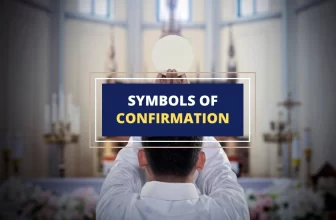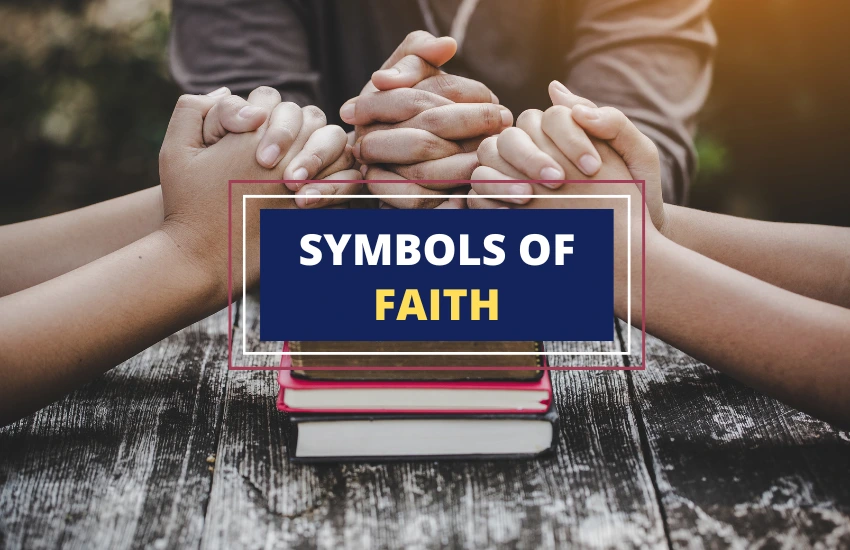
Table of Contents
Faith is an integral part of human existence. It provides us with a sense of purpose, direction, and meaning in life.
Many people express their faith through symbols, which can range from religious icons to personal talismans.
Symbols of faith have the power to evoke strong emotions and convey complex ideas and beliefs. They can be used as a source of inspiration, comfort, and guidance, or as a way to connect with the divine.
In this article, we’ll explore 15 of the most common symbols of faith from different religions and cultures and delve into their meanings and significance.
Whether you’re a believer or not, understanding the symbols of faith can help you appreciate the richness and diversity of human spirituality and gain insights into the complexities of the human experience.
1. Cross

The Christian cross is the most recognizable symbol of faith. It has a rich history dating back thousands of years and holds significant spiritual and cultural meaning around the world.
In Christian tradition, the cross represents the crucifixion of Jesus Christ, who died on the cross for the forgiveness of humanity’s sins. It symbolizes sacrifice, redemption, and resurrection.
It has been used in various forms of Christian art and iconography, such as in the design of churches, religious objects, and jewelry.
The cross is also a symbol of suffering, and many people wear it as a reminder of their own hardships and struggles.
It’s a sign of hope, reminding believers that even in their darkest moments, there’s always the possibility of renewal and new beginnings.
2. Star and Crescent

The star and crescent is a symbol of faith that represents Islam. however, it predates Islam, with a history that goes back to the Ottoman Empire, ancient Mesopotamia, and even pre-Islamic Arabia.
The star and crescent represent the moon and a star, respectively, and are often depicted together in Islamic art, architecture, and other forms of cultural expression. They’re also featured on the flags of many Muslim-majority countries, including Turkey, Algeria, and Pakistan.
The exact origins of the star and crescent symbol in the Islamic tradition are unclear, but it’s believed to have been adopted during the Ottoman Empire and was used to represent the caliphate.
Today, it continues to be a powerful symbol of Muslim identity and serves as a reminder of the rich cultural and religious heritage of the Islamic world.
3. Menorah

The menorah is an ancient symbol of the Jewish faith. it’s a seven-branched candelabrum that was used in the Temple of Jerusalem during ancient times.
It’s also a symbol of the Jewish holiday of Hanukkah, which commemorates the rededication of the temple after its desecration by the Seleucid Empire. During Hanukkah, a special menorah called a Hanukkiah is used, which has nine branches to represent the eight nights of the holiday and the shamash, or helper candle.
The menorah symbolizes many things in Jewish tradition, including wisdom, light, and divine presence. It’s a powerful reminder of the Jewish people’s resilience and determination to preserve their culture and faith throughout history, even in the face of persecution and adversity.
Today, the menorah continues to be an important symbol of Jewish identity and is often used in Jewish art, synagogues, and other forms of cultural expression.
4. Buddha
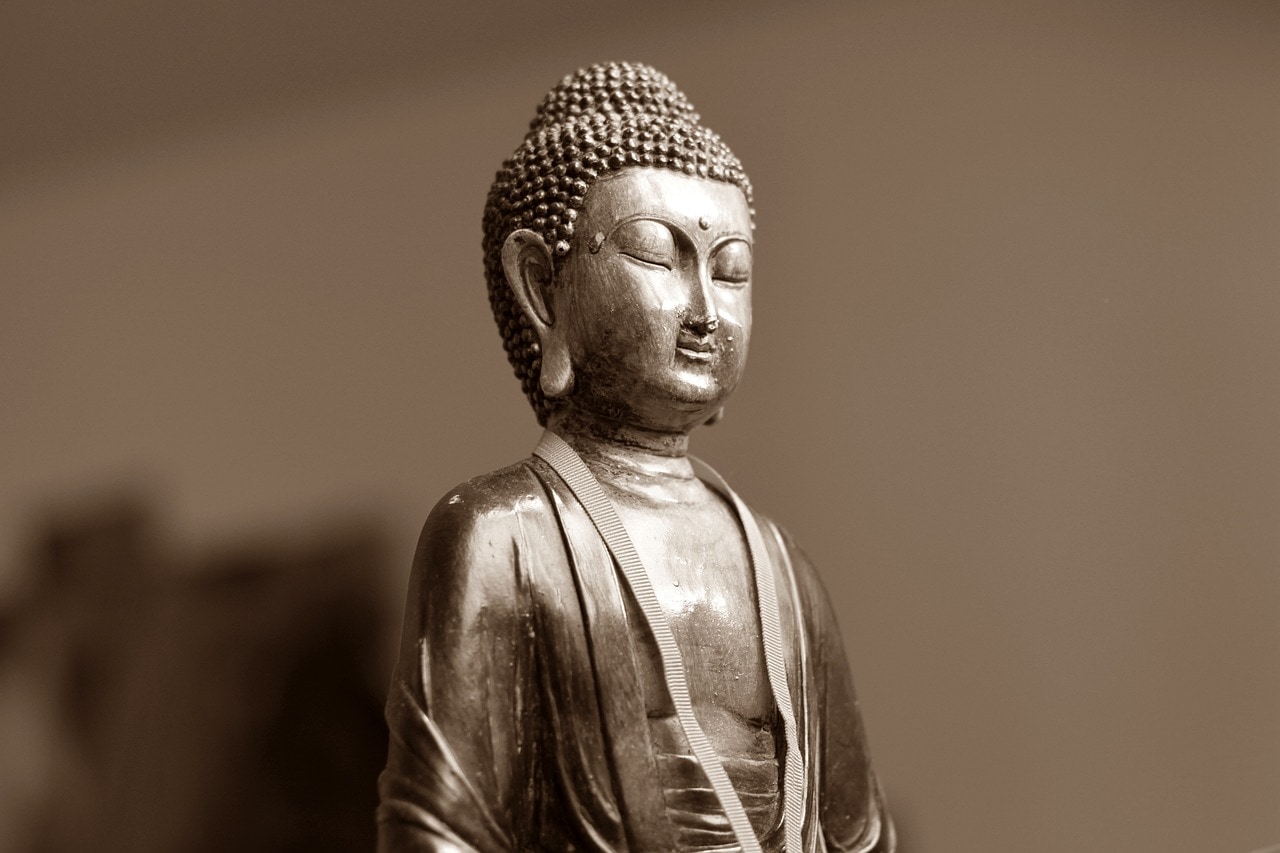
The image of the Buddha is a symbol of faith in Buddhism, one of the world’s major religions. Buddha, also known as Siddhartha Gautama, was a spiritual teacher who lived in ancient India around 2,500 years ago.
He founded Buddhism, a religion and philosophy that emphasizes the pursuit of inner peace and enlightenment. Buddha is often depicted as a serene and peaceful figure, sitting in meditation with a gentle smile.
In Buddhism, Buddha represents the ideal of enlightenment and the path to spiritual awakening.
Buddhists believe that by following the teachings of the Buddha, they can overcome suffering and achieve inner peace and happiness.
The image of Buddha is often used in Buddhist art, temples, and other forms of cultural expression.
It serves as a powerful reminder of the Buddhist values of compassion, wisdom, and mindfulness, and inspires believers to pursue a life of spiritual growth and self-discovery.
5. Om

Om is a complex symbol. In fact, it’s not just a symbol, it’s a sound too. It exists in Hinduism, Buddhism, and Jainism.
Om, also spelled Aum, is a sacred sound that represents the essence of the universe and the ultimate reality. It’s often used in religious and spiritual practices, including meditation and chanting.
In Hinduism, Om is believed to be the sound of creation, representing the three states of consciousness: waking, dreaming, and deep sleep. It’s also associated with the Hindu gods, particularly Lord Shiva.
In Buddhism, Om represents the unity of the body, speech, and mind, and is used in meditation as a way to connect with the divine and attain inner peace.
In Jainism, Om is used as a symbol of respect and reverence for the Jain scriptures and the enlightened beings who taught them.
The Om symbol, which is used to represent the Om sound, can be found in Hindu and Buddhist art and is used as a decorative element in jewelry, clothing, and other forms of cultural expression.
6. Yin and Yang

Yin and Yang is a symbol that represents Taoism, a Chinese philosophy and religion. Its history dates back to ancient China.
This symbol represents the balance between opposite and complementary forces in the universe. The black and white halves of the symbol represent yin and yang, respectively, and the small circle in each half represents the opposite force within each.
Yin represents feminine, passive, and dark energy, while yang represents masculine, active, and light energy. Together, they represent the harmonious balance between all things in the universe.
In Taoism, the yin and yang symbol is used as a way to understand the interconnectedness of all things and to achieve harmony with nature and the universe. It’s often used in Chinese medicine, martial arts, and other practices that aim to balance and harmonize the body and mind.
Today, the yin and yang symbol is recognized worldwide and is often used in art, design, and popular culture as a way to represent the balance and interdependence of opposing forces.
7. Ichthys
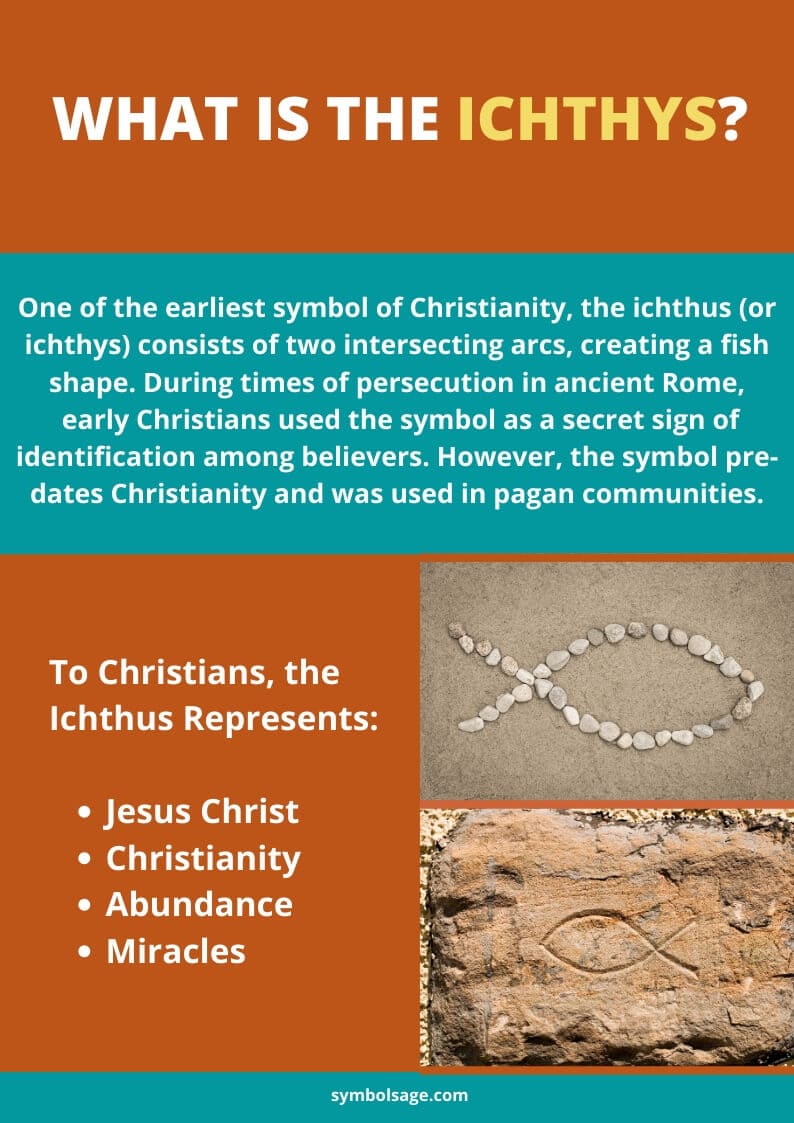
The ichthys, also known as the Jesus fish, is a symbol that represents the Christian faith. It’s a simple image of a fish that’s been used by Christians for centuries.
The ichthys symbol has its origins in early Christianity when practitioners were being persecuted by the Roman Empire. Christians would use the symbol to identify themselves to each other in secret, as it was a way to avoid detection by Roman authorities.
While the cross is the more popular Christian symbol, the ichthys is still used as a secondary one. It represents the miracle of the feeding of the five thousand, as well as the call of Jesus to his disciples to become “fishers of men.”
It’s typically used in Christian art, jewelry, and other forms of cultural expression. You’ll also see it on bumper stickers.
8. Wheel of Dharma (Dharmachakra)

The Wheel of Dharma, also known as the Dharmachakra, represents the Buddha’s teachings and the Eightfold Path, which is the path to enlightenment and liberation from suffering.
The wheel is depicted with eight spokes, which represent the eight aspects of the path. These are: Right understanding, right intention, right speech, right action, right livelihood, right effort, right mindfulness, and right concentration.
In Buddhism, the Wheel of Dharma is used as a reminder of the teachings of the Buddha and as a way to inspire practitioners to follow the Eightfold Path. This symbol continues to represent the values of wisdom, compassion, and mindfulness.
9. Star of David
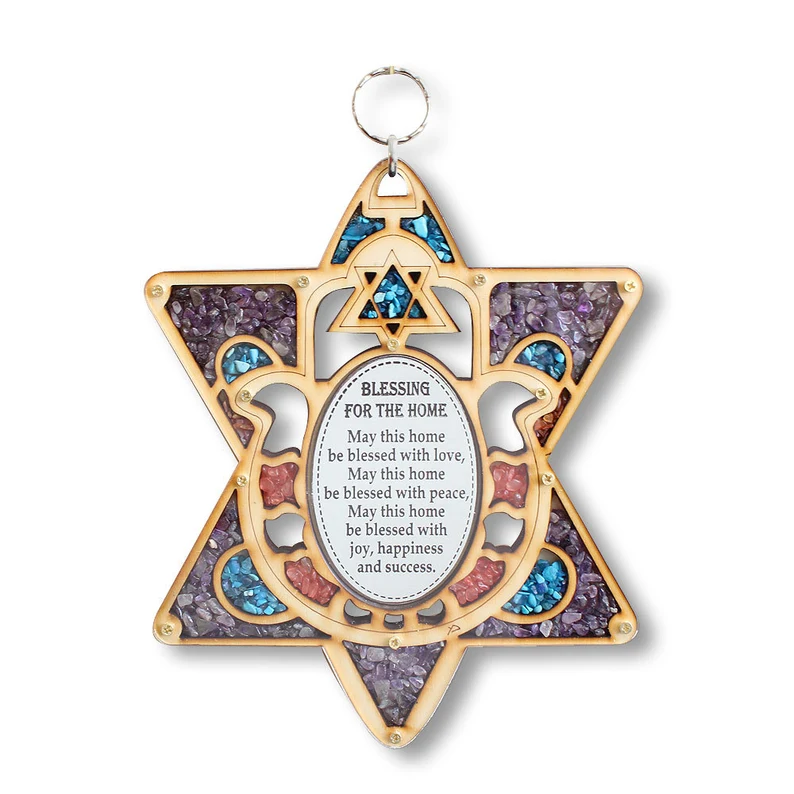
The Star of David, also known as the Shield of David, is the most well-known symbol of Judaism and of Jewish identity. Although the symbol is ancient, its connection to Judaism is quite recent.
It was only in the 19th century that it became widely used among Jewish people in Eastern Europe. By the end of World War I, it became an international symbol of the Jewish faith and people.
The Star of David is a six-pointed star made up of two overlapping triangles. It represents the Jewish people and their faith and is often used as a symbol of Jewish identity.
In Judaism, the Star of David is believed to have a number of different meanings, including the connection between God and humanity, the balance between the physical and spiritual worlds, and the unity and harmony of the Jewish people.
Today, the Star of David is recognized around the world and is often used as a symbol of Jewish culture and identity. It appears on the flag of Israel and in Jewish art and jewelry.
10. Ankh
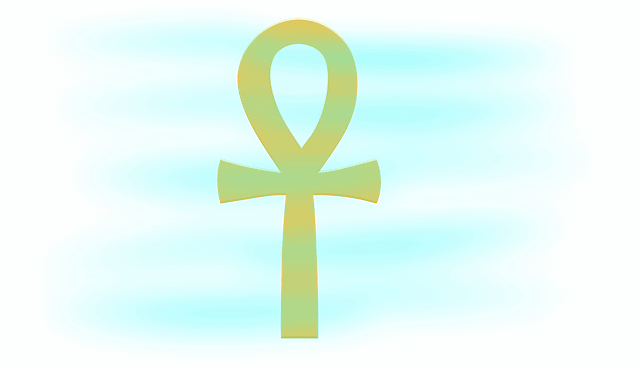
A symbol of faith in Ancient Egyptian religion, the ankh has a long and rich history, dating back to the time of the pharaohs.
It’s an ancient Egyptian hieroglyph that represents the concept of “life” and “eternity.” It’s depicted as a looped cross, with the top loop representing the afterlife and the bottom loop signifying the earthly plane.
In Ancient Egyptian religion, the ankh was believed to hold great power and was often associated with the gods and goddesses of the pantheon. It was used as a symbol of protection, fertility, and prosperity.
Today, the ankh is used as a symbol of Ancient Egyptian culture and spirituality. It appears in many forms of art, such as jewelry and tattoos, and is also often used in pop culture to represent Ancient Egyptian mythology and symbolism.
11. Khanda
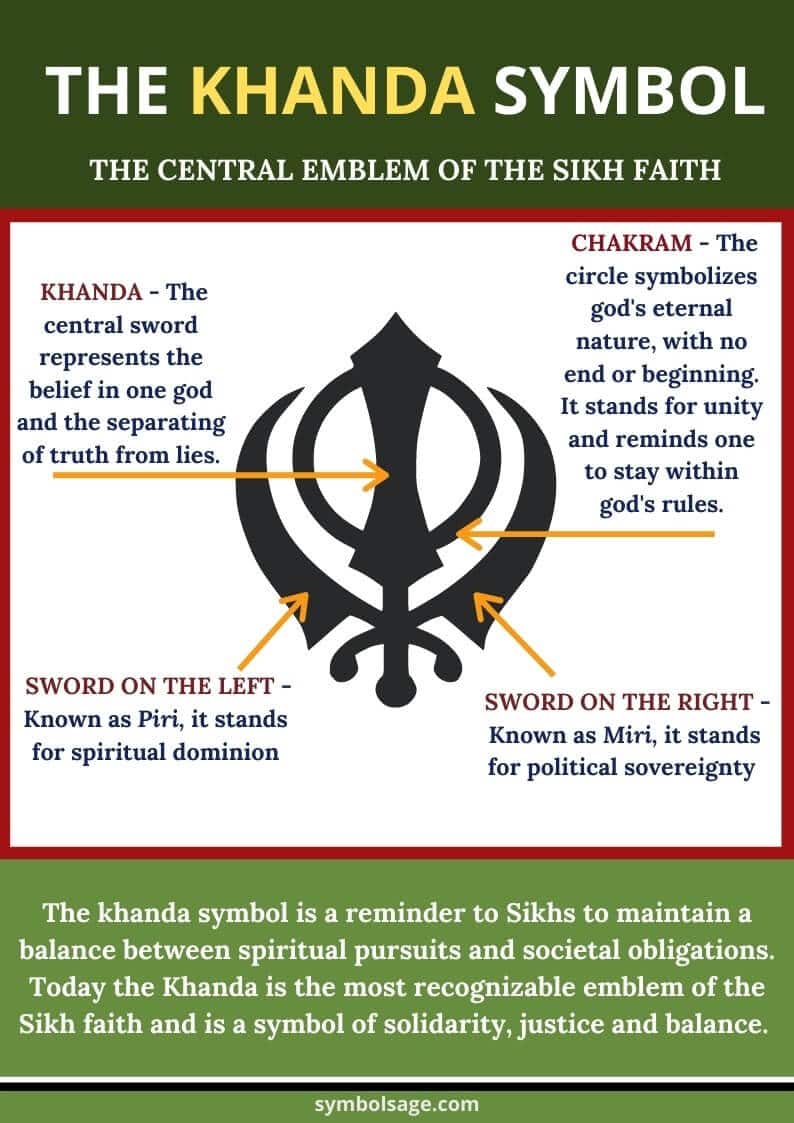
The Khanda is a symbol of faith in the Sikh religion, which originated in the 15th century in the Punjab region of India. It consists of three main elements: A two-edged sword representing spiritual power, a circle representing unity, and a double-edged dagger representing moral authority.
The Khanda symbolizes the core principles of Sikhism, including the importance of spirituality, unity, and moral courage. It represents the struggle against injustice and the need to uphold truth and righteousness.
The Khanda has a rich history in Sikhism, dating back to the time of the religion’s founder, Guru Nanak. Over time, it has become an iconic symbol of the Sikh faith, used on flags, emblems, and other religious objects.
12. Pentagram

The pentagram is an ancient pagan symbol that’s been used in many different cultures and religions throughout history. It consists of a five-pointed star, drawn in a single, unbroken loop.
In modern times, the pentagram is associated with paganism and witchcraft. Its five points represent the elements, with each point representing earth, air, fire, water, and spirit.
However, the pentagram has also been used in other contexts throughout history. In ancient Greece, for example, it was associated with Persephone and was used as a symbol of health and well-being.
Although an upside-down pentagram is a symbol of the Church of Satan, pentagrams have also been used in Christianity, symbolizing the five wounds of Christ.
Overall, the pentagram is a symbol with a complex history and meaning, and its significance as a symbol of faith depends on the context in which it is used.
13. Hand of Fatima
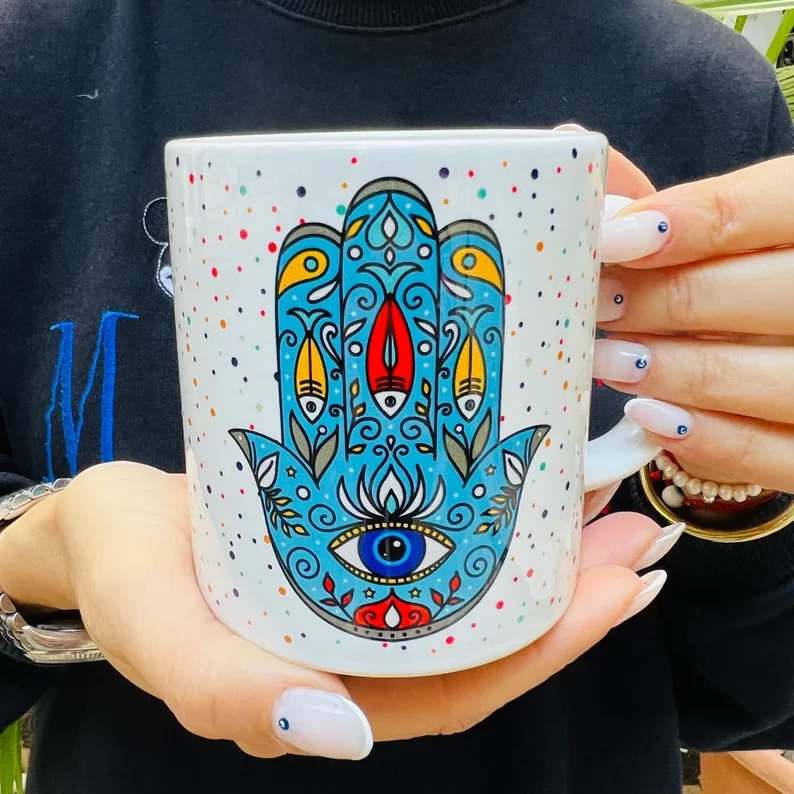
The Hand of Fatima, also known as the Hamsa Hand, is a symbol of faith that has been used in various cultures and religions for centuries. In Islamic tradition, it’s a symbol of protection and strength, representing the hand of the daughter of the Prophet Muhammad, Fatima.
The Hand of Fatima is often depicted with an eye in the center, known as the Eye of God, which is believed to offer protection and ward off evil. It’s a common symbol in Middle Eastern and North African cultures, and is often worn as a talisman or amulet.
The symbol has its roots in ancient Phoenician culture, but makes appearances in various cultures, including Jewish, Christian, and Islamic traditions.
Its popularity in the Middle East and North Africa is due in part to its association with Fatima, who’s revered as a saint in Islamic tradition.
14. Swallow

The swallow is an ancient symbol of faith that has been associated with many positive qualities throughout history, including love, loyalty, and good fortune.
In ancient Greece, the swallow was associated with the goddess Aphrodite, who was often depicted with swallows in her hair. The bird was also associated with the god of light, Apollo, and was believed to bring good fortune to those who saw it.
In Christianity, the swallow is associated with the Resurrection of Christ, and is a symbol of hope and faith.
According to legend, a swallow once flew into the empty tomb of Jesus and emerged with a thorn in its beak. This thorn was believed to be from the crown of thorns that Jesus wore on the cross. From this, the swallow became a symbol of the Resurrection and the triumph of faith over death.
15. Chi Rho

The Chi Rho is a symbol of faith in Christianity, and an abbreviation for the Greek word “Christos,” meaning “Christ.” It consists of the first two letters of the Greek word for Christ, which are superimposed over each other to form a monogram.
The Chi Rho has a long history in Christianity, dating back to the time of the Roman Empire. It was adopted by the Roman Emperor Constantine as a symbol of his Christian faith, and was used on his military standards and coins.
The symbol has since become an important part of Christian iconography, representing the central figure of the faith, Jesus Christ.
It’s commonly used in art and architecture, as well as in religious texts and other Christian symbols, such as the Alpha and Omega.
This is a powerful symbol of faith in Christianity, representing the centrality of Christ to the religion and the enduring influence of his teachings.
Wrapping Up
Symbols of faith have played a significant role in various cultures and religions throughout history. They represent core beliefs, values, and practices, and are often used to inspire and guide people in their spiritual journeys.
From the cross in Christianity to the Dharmachakra in Buddhism, these symbols have deep roots in their respective traditions and continue to hold great significance for believers today.
Whether worn as a talisman, displayed in art and architecture, or used in religious texts, symbols of faith are powerful reminders of the enduring influence of religion on human history and culture.
Similar Articles:
10 Most Common Spiritual Symbols – Meanings & Importance
12 Powerful Symbols of Strength and Their Meanings




